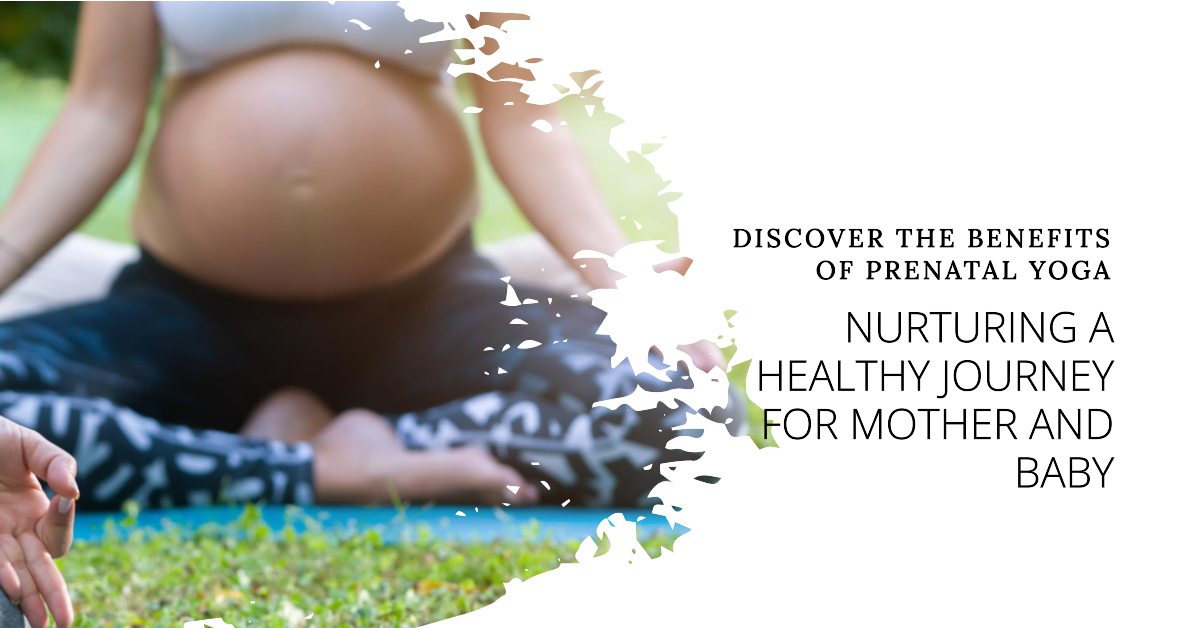Pregnancy is a miraculous journey marked by profound physical and emotional changes. As an expectant mother’s body adapts to accommodate new life, embracing holistic practices becomes vital for her well-being. Prenatal yoga, a gentle and specialized form of yoga tailored for pregnant women, emerges as a cornerstone of self-care during this transformative period. In this article, we delve into the world of prenatal yoga—its essence, benefits, differences from regular yoga, optimal starting times, and essential considerations.
In This Article
- 1 Understanding Prenatal Yoga:
- 2 Differentiating Prenatal Yoga from Regular Yoga:
- 3 When to Start Prenatal Yoga:
- 4 Benefits of Prenatal Yoga:
- 5 Safety Considerations:
- 6 Aspects of Prenatal Yoga:
- 6.1 1. Physical Aspects:
- 6.2 2. Breathing and Pranayama:
- 6.3 3. Relaxation and Meditation:
- 6.4 4. Safety and Modifications:
- 6.5 5. Preparation for Labor and Childbirth:
- 6.6 6. Community and Emotional Support:
- 6.7 7. Bonding with the Baby:
- 6.8 8. Posture and Alignment:
- 6.9 9. Gradual Progression:
- 6.10 10. Self-Care and Self-Awareness:
- 6.11 Share with your friends:
- 6.12 Like this:
- 6.13 Related
Understanding Prenatal Yoga:
Prenatal yoga is a specialized practice that amalgamates traditional yoga techniques with modifications to suit the unique needs of pregnant women. Rooted in the ancient principles of yoga, it offers a gentle and mindful approach, emphasizing physical poses (asanas), breathing exercises (pranayama), meditation, and relaxation. The aim is to cultivate physical strength, emotional stability, and an overall sense of well-being, both for the mother and the growing baby.
Differentiating Prenatal Yoga from Regular Yoga:
While the foundational principles of yoga remain constant, prenatal yoga is tailored to accommodate the physiological and emotional shifts occurring during pregnancy. Regular yoga routines might involve poses or practices that could be strenuous or unsafe for expectant mothers due to the increased flexibility, hormonal changes, and altered center of gravity. Prenatal yoga, in contrast, focuses on poses that promote flexibility, balance, and optimal blood circulation without compromising safety.
When to Start Prenatal Yoga:
The ideal time to begin prenatal yoga varies from woman to woman, but generally, most experts recommend starting around the second trimester—between weeks 14 to 16. By this time, the risk of miscarriage decreases, morning sickness tends to subside, and the energy levels are relatively stable. However, it’s always advisable to consult with a healthcare provider before embarking on any exercise routine during pregnancy, especially if there are underlying health concerns.
Benefits of Prenatal Yoga:
- Physical Well-being: Prenatal yoga gently strengthens the muscles required to support the changing body, especially the back, hips, and pelvis. It helps alleviate common pregnancy discomforts such as back pain, sciatica, and swelling by promoting proper alignment and circulation.
- Mind-Body Connection: The practice encourages expectant mothers to connect with their bodies on a deeper level, fostering self-awareness and acceptance of the changes taking place. This mind-body connection can contribute to reduced stress and anxiety levels.
- Breathing Techniques: Prenatal yoga emphasizes pranayama exercises that focus on deep, controlled breathing. These techniques not only oxygenate the body but also provide tools to manage pain during labor and enhance relaxation.
- Preparation for Labor: Certain poses in prenatal yoga mimic birthing positions and can help in opening the pelvis, promoting flexibility, and enhancing stamina—all of which can be beneficial during labor.
- Bonding: Prenatal yoga classes often create a supportive community of expectant mothers. The shared experience fosters a sense of camaraderie and offers a platform to discuss concerns, fears, and joys related to pregnancy and impending motherhood.
Safety Considerations:
While prenatal yoga is generally safe and beneficial, there are crucial safety considerations to keep in mind:
- Consultation: Always consult with a healthcare provider before starting prenatal yoga, especially if you have any medical conditions or complications.
- Qualified Instructors: Opt for classes led by certified prenatal yoga instructors who have a comprehensive understanding of the physiological changes during pregnancy and can guide you through appropriate modifications.
- Avoid Overexertion: Listen to your body and avoid overexertion. Prenatal yoga is not about pushing your limits but about nurturing your well-being.
Aspects of Prenatal Yoga:
Prenatal yoga encompasses a range of aspects that are specifically tailored to meet the unique needs and challenges of pregnant women. Let’s explore these aspects in detail:
1. Physical Aspects:
- Modified Asanas (Poses): Prenatal yoga focuses on poses that help maintain and build physical strength while accommodating the changes in the body. Poses like Cat-Cow, Modified Downward Dog, and Pigeon Pose promote flexibility, alleviate tension, and ease discomfort.
- Pelvic Floor Exercises: Strengthening the pelvic floor muscles is crucial for supporting the growing uterus, preventing incontinence, and preparing for childbirth. Prenatal yoga often includes exercises like Kegels and Bridge Pose to target these muscles.
- Gentle Stretching: Stretching promotes improved circulation, reduced muscle tension, and enhanced flexibility. Prenatal yoga incorporates stretches for the back, hips, hamstrings, and shoulders to alleviate common pregnancy discomforts.
2. Breathing and Pranayama:
- Deep Breathing: Prenatal yoga places a strong emphasis on deep, diaphragmatic breathing. Learning to breathe deeply helps increase oxygen intake, relax the body, and manage stress and anxiety.
- Ujjayi Breath: This audible, rhythmic breathing technique is often practiced during prenatal yoga. Ujjayi breath helps regulate breath and promotes relaxation, making it useful during labor.
3. Relaxation and Meditation:
- Guided Relaxation: Relaxation techniques are integral to prenatal yoga. Guided relaxation helps pregnant women release tension, reduce anxiety, and connect with their bodies and babies.
- Meditation: Mindfulness meditation and visualization exercises are included to promote emotional well-being and mental clarity.
4. Safety and Modifications:
- Safety Considerations: Prenatal yoga instructors guide participants in avoiding poses that could strain the abdominal muscles, overstretch ligaments, or compromise the baby’s well-being. Twisting poses and poses that involve lying flat on the back for extended periods are often modified.
- Use of Props: Props like yoga blocks, bolsters, and cushions are used to support the body and provide comfort during poses.
5. Preparation for Labor and Childbirth:
- Labor-Ready Poses: Prenatal yoga often includes poses that mimic birthing positions, such as Squat Pose, Malasana (Yogi Squat), and Supported Child’s Pose. These poses help open the pelvis, strengthen the legs, and promote comfort during labor.
- Breathing Techniques for Labor: Prenatal yoga introduces various breathing techniques that can be used during contractions and the pushing phase of labor.
6. Community and Emotional Support:
- Creating a Supportive Environment: Prenatal yoga classes provide a space for expectant mothers to connect with one another, share experiences, and build a sense of community. This sense of belonging can alleviate feelings of isolation and promote emotional well-being.
- Addressing Emotional Changes: Prenatal yoga instructors often discuss the emotional changes that accompany pregnancy, providing tools to manage stress, anxiety, and mood swings.
7. Bonding with the Baby:
- Mindful Connection: Prenatal yoga encourages mothers to develop a mindful connection with their growing babies. Breathing techniques, meditation, and gentle movements are often accompanied by thoughts of love and positivity directed towards the baby.
8. Posture and Alignment:
- Promoting Good Posture: As the body’s center of gravity shifts during pregnancy, maintaining good posture becomes essential for avoiding discomfort and preventing strain. Prenatal yoga guides participants in aligning their bodies to support the changing posture.
9. Gradual Progression:
- Adapting to Each Trimester: Prenatal yoga classes often adapt the practice to the different stages of pregnancy. The intensity, poses, and focus areas may vary to accommodate the changing needs and physical capabilities of the expectant mother.
10. Self-Care and Self-Awareness:
- Honoring the Body: Prenatal yoga encourages self-care by honoring the body’s needs and limitations. The practice emphasizes self-awareness, encouraging participants to listen to their bodies and make choices that prioritize their well-being.
Prenatal yoga is a holistic approach to nurturing the well-being of both the expectant mother and her growing baby. It encompasses physical, emotional, and mental aspects that adapt to the changes of pregnancy. By incorporating modified poses, specialized breathing techniques, relaxation, preparation for labor, emotional support, and mindful bonding, prenatal yoga empowers women to embrace their pregnancy journey with strength, confidence, and a deep sense of connection.
Prenatal yoga serves as a nurturing sanctuary for expectant mothers, offering a holistic approach to physical, emotional, and mental wellness. By fostering strength, flexibility, relaxation, and self-awareness, it equips women with valuable tools to navigate the transformative journey of pregnancy and childbirth. As a sacred practice that honors both the mother and the baby, prenatal yoga exemplifies the power of holistic self-care during this precious period of life.











